Major W. A. Mercer requests to spend $47.70 from the "Indian School, Carlisle, Pa., 1908" appropriation on porch shades and fire screens for the superintendent's quarters and supplies for the shoe shop. Commissioner of Indian Affairs F. E. Leupp grants Mercer's request.
National Archives and Records Administration
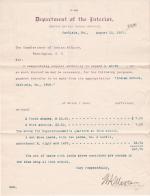
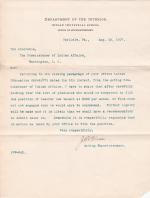
J. R. Wise requests no action be taken by the Office of Indian Affairs in filling a teaching position at the Carlisle Indian School until they have had time to go over the graduate list.
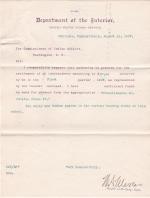
Major W. A. Mercer requests to spend $22.00 from the "Miscellaneous Receipts, Class IV" appropriation to pay for a debt incurred for buying newspapers for the Carlisle Indian School during the first quarter of 1908. Commissioner of Indian Affairs F. E. Leupp grants Mercer's request.
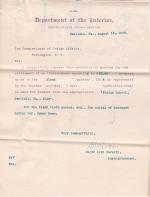
Request to cover indebtedness incurred in the purchase of a casket for the burial of Henry Rose by William A. Mercer. Francis E. Leupp approves request.
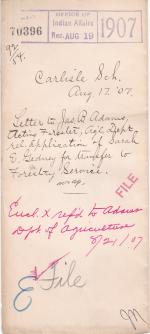
Wrap of letter to James B. Adams regarding application of Sarah E. Gedney's transfer to Forestry Service.
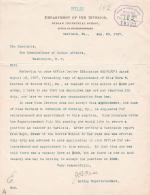
These materials include correspondence regarding the appointment of Dora S. Lecrone as a Teacher at the Carlisle Indian School and the possible reinstatement of Barbara S. McHargue in that same position.
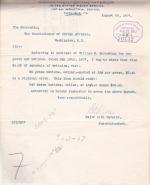
Superintendent William A. Mercer corrects a previous request from 20 gross buttons for $2.40 to 240 dozen buttons for $28.80.
Office of Indian Affairs Chief Clerk F. M. Conser informs Mercer that the contract cannot be changed since it has already been approved. If the buttons have not yet arrived, Conser suggests that they can cancel…
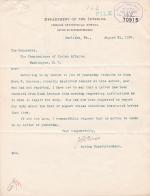
These materials include correspondence regarding Dora S. Lecrone's acceptance of her appointment as teacher at the Carlisle Indian School.
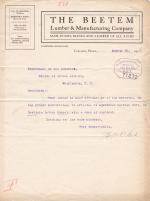
Secretary and Treasurer of The Beetem Lumber & Manufacturing Company Newton C. Wert informs the Office of Indian Affairs that the contract and agreement between his company and the Carlisle Indian School has been agreed upon.
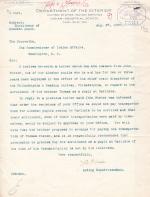
This document contains correspondence concerning a request to enroll Thomas Foster, from Alaska, at the Carlisle Indian School. Foster's enrollment was approved on the condition that his family pay for his transportation to and from the school. Foster's brother John, who worked for the Pennsylvania and Reading Rail Road, made transportation…
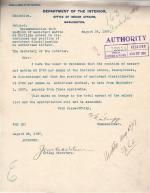
Commissioner of Indian Affairs Francis E. Leupp requests that the Secretary of the Interior discontinue an assistant matron position at Carlisle and replace it with a new assistant disciplinarian position with the same salary.
Acting Secretary of the Interior Jesse Wilson approves Leupp's request, and Acting Chief Clerk of the Department…
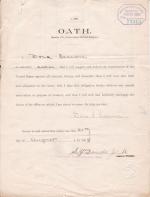
Dora Lecrone, who is planning to work at Carlisle, forwards her oath of office to the Civil Service Commission in Washington DC.
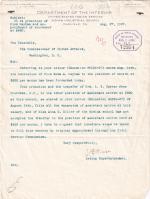
Acting Superintendent of the Carlisle Indian School J. R. Wise forwards the nomination of Matron Elsa A. Mayham to the Commissioner of Indian Affairs and informs him that the transfer of Assistant Matron A. B. Carter from Cherokee, N. C. and Assistant Matron Anna O. Miller from the Oneida school would fill all of the matron and assistant matron…
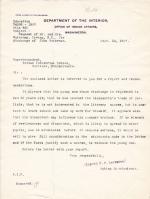
This document contains correspondence concerning the return home of John Waterman.
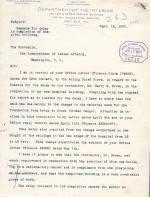
Superintendent William A. Mercer explains that there was a slight delay in completing the construction of the new hospital because they switched the foundation from brick to stone and lowered the ceilings from 12 to 10 feet in two wings of the building. He requests that no deductions in pay are made from the original contract with contractor…
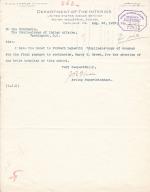
Carlisle Indian School Superintendent J. R. Wise forwards a voucher for the final payment to contractor Harry G. Brown to build the new hospital at the school.
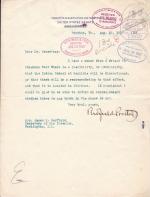
This material includes correspondence between Redfield Proctor, a Senator from Vermont, and Commissioner of Indian Affairs James R. Garfield regarding a rumor that the Carlisle Indian School will be closed or moving the school to Oklahoma.
Note: Commissioner Garfield's letter was originally found in a different folder; RG 75, CCF Entry…
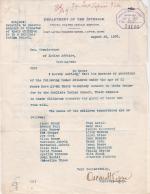
These materials include correspondence regarding the transfer of twenty-five students from the Fort Lapwai Training School to the Carlisle Indian School.
Note: Joe Cook is also known as Joseph Williams.
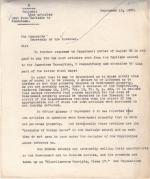
These materials include correspondence regarding a refund for articles lost during transit from the Jamestown Exposition to the Carlisle Indian School. The articles were owned by Carlisle and the government, and so the reimbursement was issued to the school's credit.
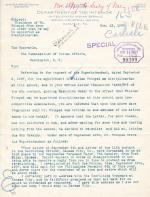
These materials include correspondence, legal documents, and an Executive Order regarding the appointment of William Stimpel as Disciplinarian for the Large Boys Quarters of the Carlisle Indian School. The position had been temporarily filled by numerous teachers and recent graduates without satisfaction, so Stimple was requested by…
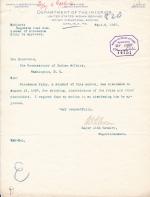
This document contains correspondence concerning the return home of Nicodemus Billy.
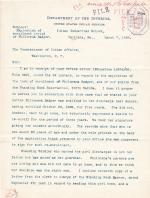
These materials include correspondence regarding the re-enrollment of Philomena Badger. Badger's re-enrollment was the cause of clarification on the enrollment policy of pupils over the age of 18. Philomena re-enrolled at Carlisle when she was 18 years old, against the wishes of her guardian; the Commissioner of Indian Affairs decided that…

These materials include correspondence regarding a teacher vacancy at the Carlisle Indian School. The position was filled temporarily by recent Carlisle graduate Edith Bartlett, until the application of Clara M. Ellis was received. Ellis, the daughter of the former Chief Clerk of the Office of Indian Affairs, was offered the position at…
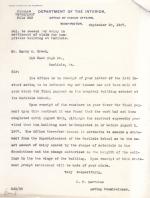
Contractor and Builder Harry G. Brown requests the final payment from the Commissioner of Indian Affairs for building the brick hospital at the Carlisle Indian School.
Acting Commissioner C. F. Larrabee informs Brown that he hasn't received payment yet because Brown finished the project late. Larrabee needs to ask the Superintendent how…
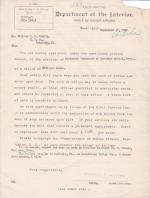
C. F. Larrabee informs William H. H. Austin that he has been appointed Assistant Carpenter at the Carlisle Indian School. Austin will be paid a salary of $720 per year.
